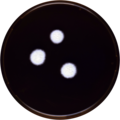| Aspergillus teporis | |
|---|---|
| Scientific classification | |
| Kingdom: | Fungi |
| Division: | Ascomycota |
| Class: | Eurotiomycetes |
| Order: | Eurotiales |
| Family: | Aspergillaceae |
| Genus: | Aspergillus |
| Species: | A. teporis |
| Binomial name | |
| Aspergillus teporis A.J. Chen, J.C. Frisvad & R.A. Samson (2017) [1] | |
Aspergillus teporis is a species of fungus in the genus Aspergillus . It is from the Aspergillus section. [1] The species was first described in 2017. [1] It has been reported to produce echinulins, epiheveadrides, isoechinulins, and neoechinulins. [1]

